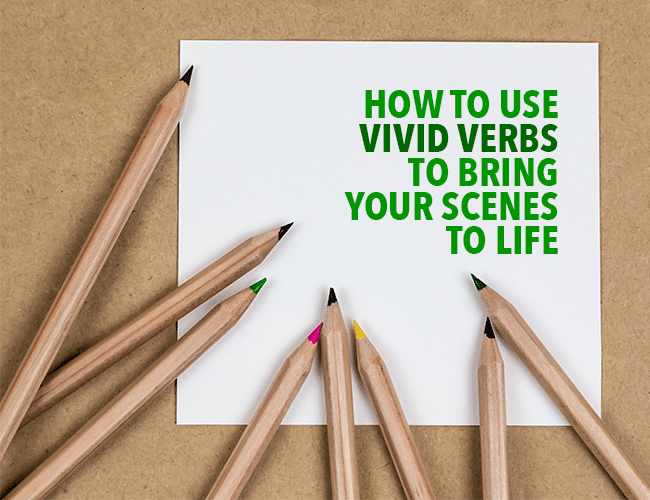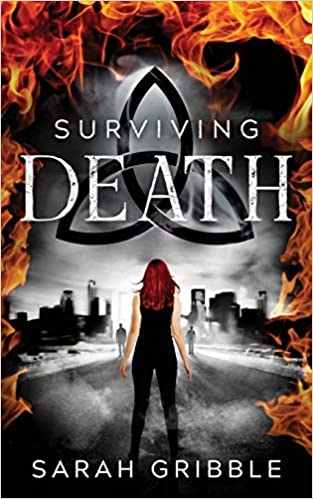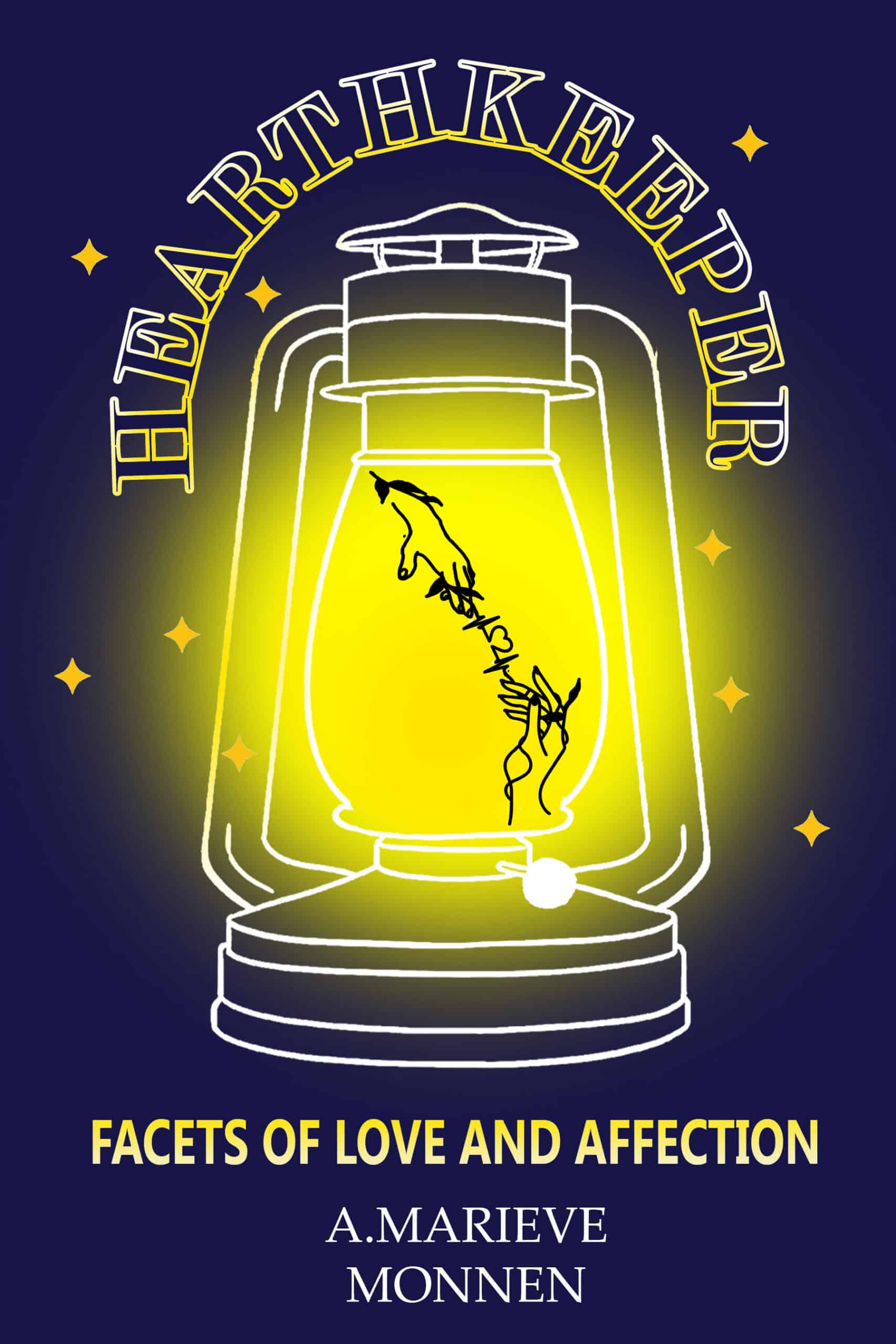Have you ever felt your writing is flat, despite how many beautiful words you use? You might be overusing adjectives and adverbs. Luckily, there is an easy fix—use vivid verbs instead.

Although you might instinctively think adjectives will improve your character description or prose, swapping exciting verbs for common verbs actually does a better job at electrifying your creative writing.
In this article, you can learn a two-step process to improve your writing skills, and start implementing these tips with a little help from a descriptive verb list filled with various strong verbs.
The Two-Step Process to Bring Your Scenes to Life With Vivid Verbs
What are some ways to use vivid verbs in the English language? Ways that take dull verbs and turn them into powerful verbs that bring a story to life?
To improve your descriptive writing, you need to do more than rely on a thesaurus filled with catchy synonyms that may or may not work for your story.
This two-step process to using creative writing verbs will help write a vivid picture for every scene. Thus, it will bring your story to life.
Step 1: Decide on your message
The fact is, a verb has a lot to say. Just like how action speaks volumes in life, verbs speak volumes in a story. But it's important that you first decide on what you want to say to your readers. Take the following:
The flower was a beautiful shade of red, its petals full of dewdrops, reflecting the light of the sun.
There is nothing wrong with this sentence—the flower is red, and it is beautiful. But what are you trying to say to your readers? There is nothing beyond the simple appearance of the flower.
Do you want your readers to openly admire the flower itself? Or look at it as something more, like a symbol of love or hope?
Does it represent honest beauty or vanity? What purpose does this flower serve for your story?
Decide on the message you want to convey first and foremost. Then, replace any weak verbs or adjectives with vivid verbs that better enforce that message.
Step 2: Choose the right verbs
People perform their actions with intention. In literature, objects and plants do as well. Once you’ve decided on your message and how you want your object to contribute to the scene, you have to choose the correct “actions” for it to take.
Consider a scene where your character stumbles onto an abandoned lot in an apocalyptic wasteland and is surprised to find living plants growing in it, among which is a shockingly beautiful flower:
The flower brandished its bold red petals, adorned with sun-kissed dew drops.
Suddenly, the flower seems alive. It is still red, and full of dew, but now it’s also prideful, boasting its beauty to the viewer, setting itself apart from the desolation around it.
Action verbs can make great vivid verbs.
Just look at how the dew drops are no longer just water but “adorned” like jewels in the revised example. As if the flower chose to dress up and put itself on display. Even the sun feels more alive with the use of the word “kissed.”
Your character is drawn to this surprising object out of its normal environment, full of life and energy.
Now consider that your characters, a young couple in love, are sitting in a field struggling to confess their feelings. One of them spots a flower that might make a nice spontaneous gift for the other:
The flower blushed under the sun, rouge-red petals hidden under a layer of dew.
See how the flower seems shy, demure and gentle, like a lady consciously concealing her face? The point is further driven home by using the word “rouge,” which invokes the image of makeup. Your characters are in love, and the flower is now a timid third participant, offering itself as a symbol of their affection.
Whether trying to improve your writing in an English language arts class or your latest fiction book, using vivid verbs could make the difference between a mediocre paper or book and a great one.
Getting Started: Try These Vivid Verbs
Sometimes embracing the concept of using vivid verbs is a lot easier than actually coming up with some strong action verbs for your prose.
To get you started, try using some of these verbs in your sentences to inspire actions instead of using adjectives commonly used to describe emotions:
A Brief List of Vivid Verbs
Angry: crunch, grind, yank
Bashful: blush, hide, blink
Cheerful: giggle, chime, skip
Delightful: hug, tickle, sing
Excited: clink, jump, hoot
Fearful: bawl, shiver, whimper
Grumpy: sigh, moan, huff
Hungry: gobble, rumble, crunch
Icky: bump, stink, ooze
Joyous: kiss, squeeze, laugh
Kind: smile, brush, stroke
Loud: blare, screech, blast
Mad: stomp, yell, shake
Nervous: quiver, chatter, scrunch
Optimistic: open, volunteer, lead
Pride: beam, win, support
Quiet: tiptoe, hush, whisper
Remorse: grieve, reflect, fight
Slow: saunter, plod, stagger
Tough: tackle, stand, lift
Upset: ramble, speed, squeak
Vicious: punch, claw, bite
Worry: tap, tug, fidget
Zest: scamper, twirl, bake
The Magic of Vivid Verbs
The same object described using different vivid verbs invokes vastly different impressions. Not only that, they can contribute to the atmosphere of a story much more strongly than adjectives. Using description this way can also increase the strength of your story within its particular genre.
A hero heading into battle in an epic fantasy novel might cross a mountain path with trees “bending to acknowledge his might” and a breeze “parting grass and leaves before him to make way.”
In contrast, an old man mourning his lost youth on a morning walk might see trees “bent and tired under the weight of their leaves, strangled by ivy,” and hear the wind “sighing its exhaustion, whispering secrets of days past.”
A good way to get a grasp on the concept of describing with verbs is to think of everything in a scene as a contributing character—objects included. Decide on their purpose and pick the appropriate action, and you have a living, breathing scene.
Do you use vivid verbs to enhance description? Let us know in the comments.
PRACTICE
For today's practice, describe something (or someone!) with verbs, not adjectives. First, pick a subject:
- A couple having a fight
- A horse
- A rock
- Something else (your choice!)
Next, choose an emotion from the list above.
Then, write a paragraph about your subject that captures that emotion. Remember to use vivid verbs to express the emotion with action.
Take fifteen minutes to write. Share your descriptive paragraph in the Pro Practice Workshop, and don’t forget to leave feedback for your fellow writers!
Not a member yet? Join us here.
Happy writing!
J. D. Edwin is a daydreamer and writer of fiction both long and short, usually in soft sci-fi or urban fantasy. Sign up for her newsletter for free articles on the writer life and updates on her novel, find her on Facebook and Twitter (@JDEdwinAuthor), or read one of her many short stories on Short Fiction Break literary magazine.



Waiting in the refined hush of the president’s parlor, Mary Pearson struggled to tuck in a loose bead on her dead
mother’s reticule. Frayed threads and faded cotton, it was over 40 years old. The weary bead popped off and rolled
across Cottey College’s impossibly shiny wood floor. Made of cheap glass, it rattled toward a large palm fern and
petered out behind the footed pot.
The rock yanked away from the other rocks, grinding away the hours. The wind screamed its defiance, shouting insults at him. The trees fought with each other. The grass stomped and fumed.
He sauntered down the street, listing to the trees whisper secrets of days gone by. He saw the orange leaves, discarded into the ground, and saw the grass strangled by the wind. He knew in his heart he was getting old.
I use vivid verbs all the time. I had a “professional” editor slash all my vivid verbs with a red pen and told me to simplify because no one wanted complicated imagery. I fired that editor. Then I had a Beta reader tell me my vivid verbs were unbelievable and not needed. I fired that Beta reader. I guess people lack imagination these days.